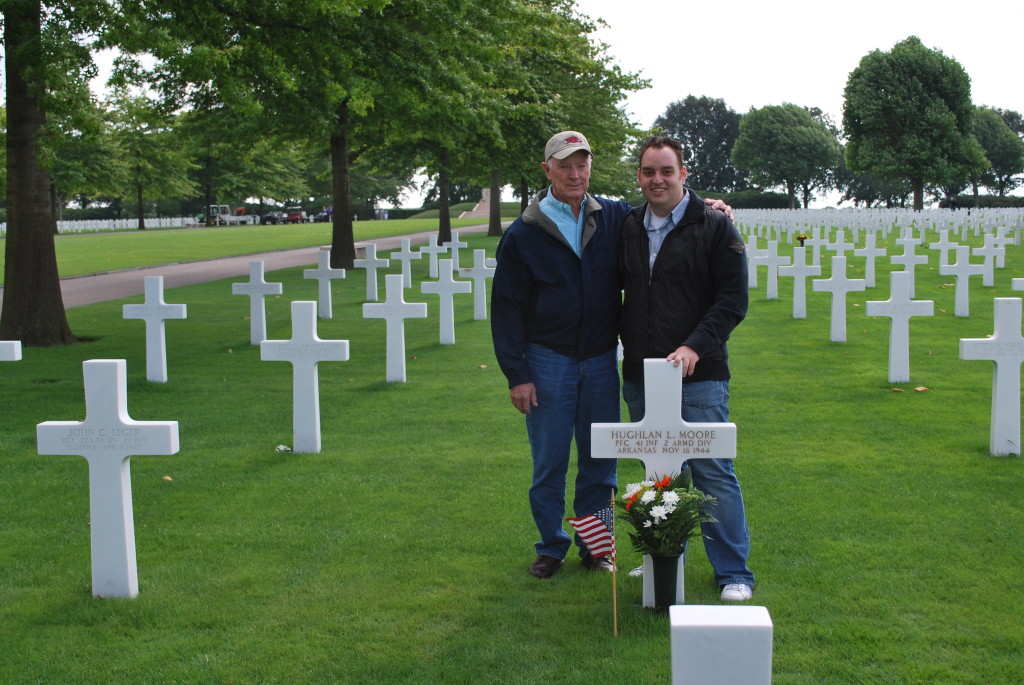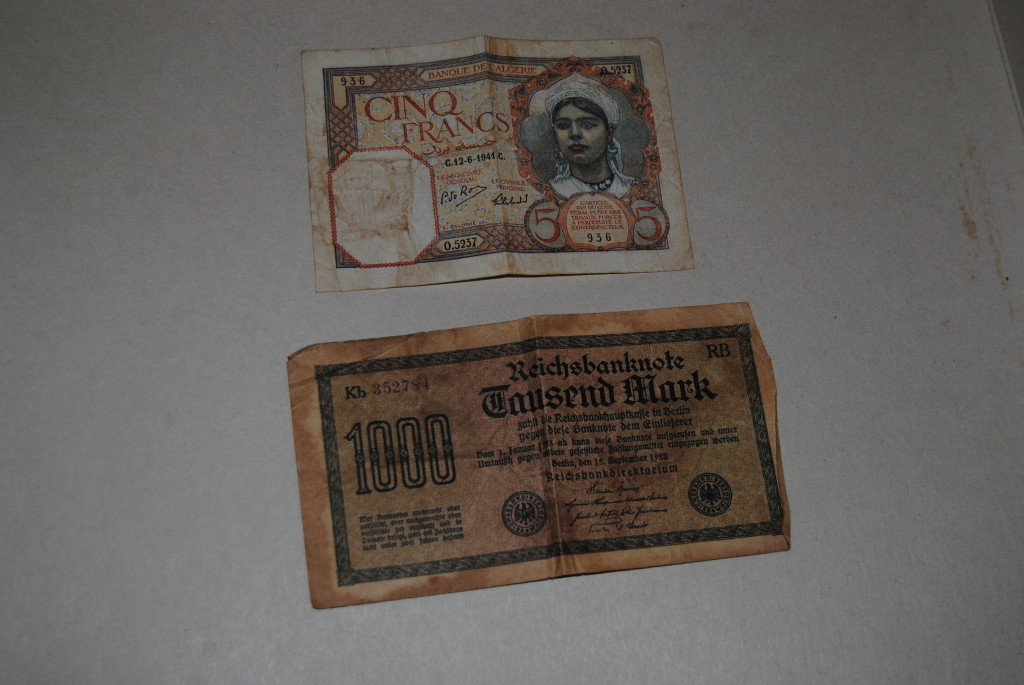Hughlan L. Moore was born on March 26, 1919, in Quitman, a small town in Cleburne County, Arkansas. He was the eldest of four children born to Herbert C. Moore and Nora B. Moore. Hughlan grew up with his two younger brothers, Earl and Milton, and his sister, Alline. From a young age, Hughlan developed a deep appreciation for the outdoors, especially enjoying hunting and fishing—pastimes he often shared with his brother Earl. The two were very close and formed a bond that would last a lifetime.

On December 2, 1941, just days before the attack on Pearl Harbor,

2nd Armored Div. patch

41st Armored Infantry Regiment Crest

PFC Hughlan L. Moore
He was assigned to the 41st Armored Infantry Regiment, 2nd Armored Division, and served as a combat infantryman with Company B. His military journey took him across key battlefronts, including Algeria, Sicily, Normandy, Northern France, and the Rhineland.
On August 12, 1944, Hughlan was wounded in France and subsequently hospitalized. For his bravery and sacrifice, he was awarded the Purple Heart. Sadly, just a few months later, Hughlan was killed in action on November 18, 1944, during the Battle for Aachen in Würselen, Germany.Initially, he was buried on November 19, 1944, in the U.S. Military Cemetery in Margraten, the Netherlands, with a wooden cross marking his grave at Plot B, Row 1, Grave 12. Later, on April 15, 1948, he was interred in a permanent grave at the American Cemetery in Margraten: Plot G, Row 13, Grave 25.

More than 65 years after his death, in 2009, Hughlan’s grave was rediscovered by his brother Earl Moore with the help of a group of Dutch schoolchildren. A news article in the Dutch newspaper Limburgs Dagblad brought attention to the story. Moved by the discovery, Earl traveled to the Netherlands in August 2009, accompanied by his son, daughter-in-law, and grandchild, to visit Hughlan’s grave for the first time. It was an emotional and long-awaited moment of closure.


Hughlan L. Moore’s story is one of courage, sacrifice, and enduring family love. His legacy lives on not only in military records and grave markers, but in the memories and hearts of those who continue to honor his life.

In the summer of 2010, the author of this account visited Earl and his family in Quitman, Arkansas. They walked through the places where Hughlan and Earl had grown up—the home where Hughlan was born, the tree they climbed as boys. The visit was deeply moving, especially seeing and holding Hughlan’s personal belongings, such as his wallet—still bearing the bloodstains from the day he was wounded—returned by the Army to the Moore family.






